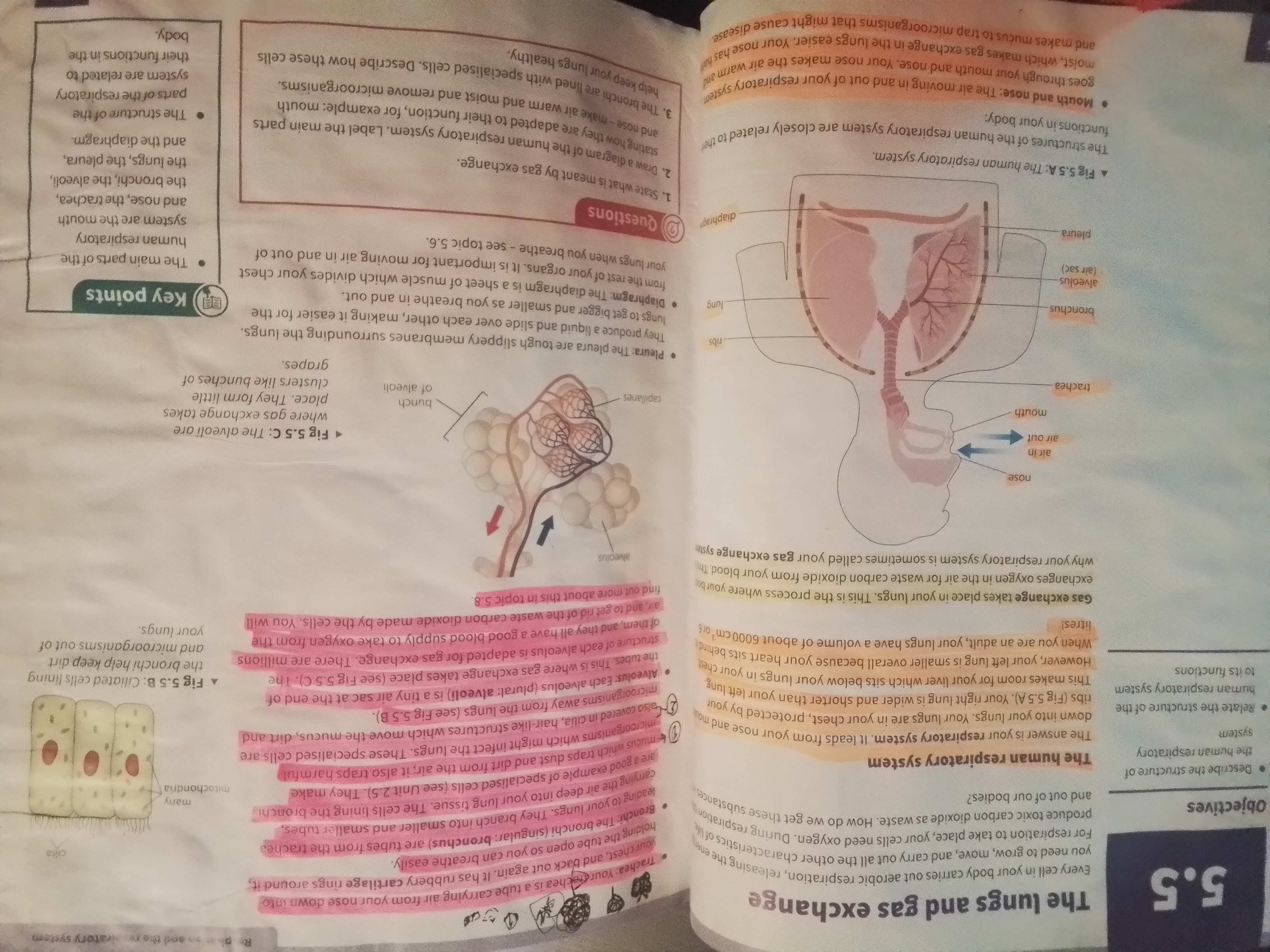What is meant by gas exchange? Describe the structure of the human respiratory system and explain how its parts relate to their functions in the body.

Understand the Problem
The question is asking about the human respiratory system, specifically focusing on the process of gas exchange, its structure, and functions related to various parts of the system. It may involve labeling parts and describing their roles.
Answer
Gas exchange involves oxygen entering blood and carbon dioxide leaving it at the alveoli. Key parts include the trachea, bronchi, and alveoli, each vital for airflow and breathing.
Gas exchange is the process by which oxygen moves from the lungs to the blood, and carbon dioxide moves from the blood to the lungs. The human respiratory system consists of the nose, mouth, trachea, bronchi, alveoli, lungs, pleura, and diaphragm. Each part has a specific function in facilitating breathing and ensuring efficient gas exchange. The alveoli are the primary sites for this exchange due to their large surface area and network of capillaries.
Answer for screen readers
Gas exchange is the process by which oxygen moves from the lungs to the blood, and carbon dioxide moves from the blood to the lungs. The human respiratory system consists of the nose, mouth, trachea, bronchi, alveoli, lungs, pleura, and diaphragm. Each part has a specific function in facilitating breathing and ensuring efficient gas exchange. The alveoli are the primary sites for this exchange due to their large surface area and network of capillaries.
More Information
The alveoli, resembling clusters of grapes, provide a large surface area for gas exchange, essential for efficient oxygen and carbon dioxide transfer.
Tips
A common mistake is confusing the roles of bronchi and alveoli; ensure to differentiate their structures and functions.
Sources
- Respiratory System: Organs, Facts, Anatomy & Function - my.clevelandclinic.org
- Gas Exchange | Anatomy and Physiology II - courses.lumenlearning.com
- How the Lungs Work - The Respiratory System | NHLBI, NIH - nhlbi.nih.gov
AI-generated content may contain errors. Please verify critical information